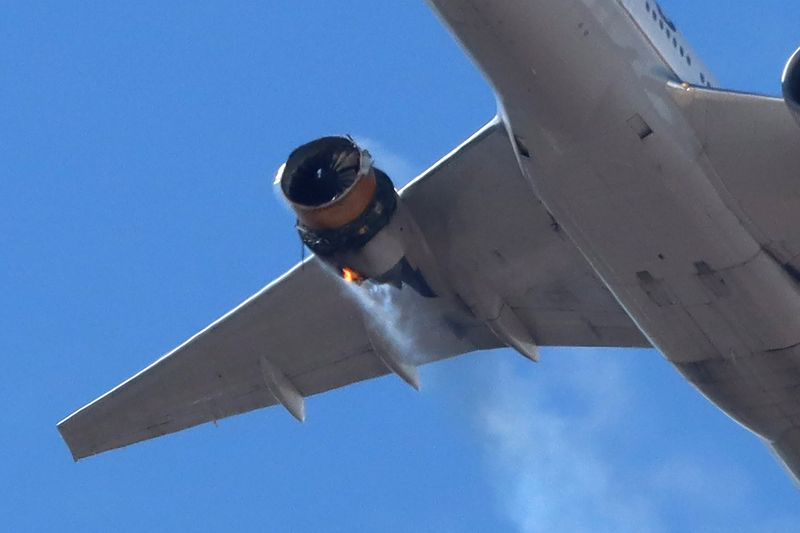Damage to United Boeing 777 engine consistent with metal fatigue – NTSB By Reuters

By David Shepardson and Jamie Freed
WASHINGTON (Reuters) – U.S. National Transportation Safety Board (NTSB) Chairman Robert Sumwalt said Monday that damage to a fan blade in a Pratt & Whitney engine that failed in a United Airlines Boeing (NYSE:BA) 777-200 is consistent with metal fatigue, according to a preliminary assessment.
At a news briefing, Sumwalt said it was not clear whether Saturday’s failure of the PW4000 engine with a “loud bang” four minutes after takeoff is consistent with another engine failure on another Hawaii-bound United flight in February 2018 that was attributed to a fatigue fracture in a fan blade.
The engine that failed on the 26-year-old Boeing Co 777 and shed parts over a Denver suburb was a PW4000 used on less than 10% of the global fleet of 777 widebody jets.
In another incident on Japan Airlines (JAL) (T:9201) 777 with a PW4000 engine in December 2020, Japan’s Transport Safety Board reported it found two damaged fan blades, one with a metal fatigue crack. An investigation is ongoing.
The focus is more on engine maker Pratt & Whitney and analysts expect little financial impact on Boeing, but the PW4000 issues are a fresh headache for the planemaker as it recovers from the far more serious 737 MAX crisis. Boeing’s flagship narrowbody jet was grounded for nearly two years after two deadly crashes.
The United engine’s fan blade will be examined on Tuesday after being flown to a Pratt & Whitney laboratory where it will examined under supervision of NTSB investigators.
“What is important that we really truly understand the facts, circumstances and conditions around this particular event before we can compare it to any other event,” Sumwalt said.
Boeing recommended that airlines suspend the use of the planes while the FAA identified an appropriate inspection protocol, and Japan imposed a temporary suspension on flights.
The Federal Aviation Administration plans to issue an emergency airthworthiness directive soon that will require stepped-up inspections of the fan blades for fatigue.
The FAA in March 2019 after the February 2018 United engine failure attributed to fan blade fatigue ordered inspections every 6,500 cycles. A cycle is one take-off and landing.
Sumwalt said the United incident was not considered an uncontained engine failure because the containment ring contained the parts as they were flying out.
There was minor damage to the aircraft body but no structural damage, he said.
NTSB will look into why the engine cowling separated from the plane and also why there was a fire despite indications fuel to the engine had been turned off, Sumwalt added.
Pratt & Whitney, which is owned by Raytheon (NYSE:RTN) Technologies Corp, said on Sunday it was coordinating with regulators to review inspection protocols.
Nearly half of the global fleet of 128 planes operated by airlines including United, JAL, ANA Holdings, Korean Air and Asiana Airlines had already been grounded amid a plunge in travel demand due to the coronavirus pandemic.

